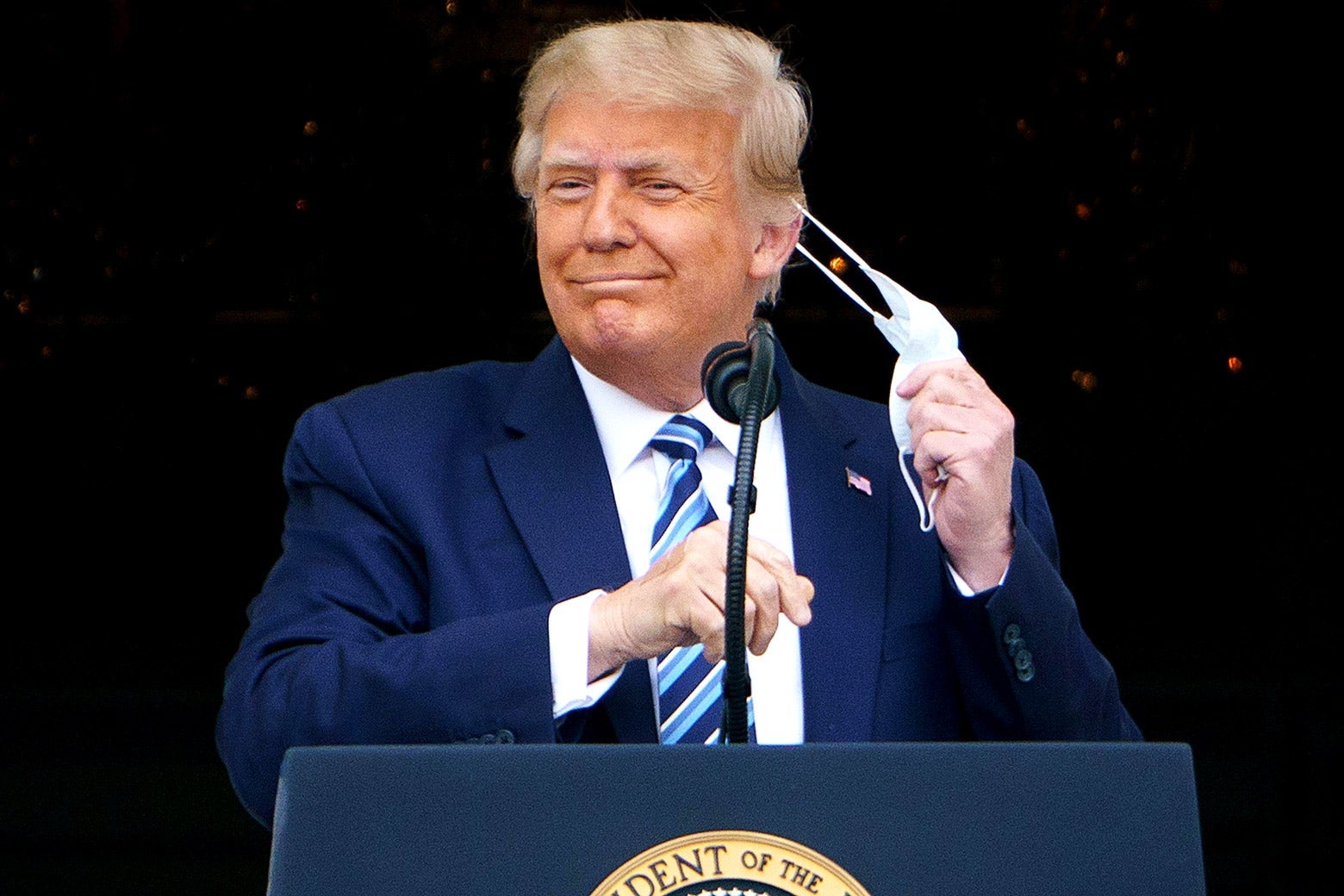It’s hard to talk about Donald Trump’s record on COVID-19 without sounding hyperbolic. That’s because the documented facts are so awful: Trump constantly deceived the public and interfered in every element of the government’s response, leading to hundreds of thousands of deaths that were, according to his own advisers, unnecessary. Every new examination of this catastrophe yields more evidence of the former president’s perfidy. The latest revelations, unearthed by Washington Post reporters Yasmeen Abutaleb and Damian Paletta, show how Trump, behind the scenes, tried to conceal the crisis to protect his image.
Abutaleb and Paletta present their findings in a new book, Nightmare Scenario: Inside the Trump Administration’s Response to the Pandemic That Changed History. The book, which relies in part on interviews with former Trump administration officials, won’t be available until June 29, but excerpts quoted in the Post describe several incriminating episodes. In at least two cases, Trump tried to keep infected Americans from setting foot in the United States, not to prevent the virus from spreading, but to prevent the infections from being counted as part of Trump’s record. In one instance—Trump’s opposition to letting 14 Americans return from a cruise ship, the Diamond Princess—the authors add backstage details: Trump complained to Alex Azar, his secretary of health and human services, that the return of the infected Americans “doubles my numbers overnight.” The authors report that Trump tried to fire the official who approved the decision.
The book also reveals a second episode, previously unreported, in which Trump repeatedly proposed that Americans who had been infected overseas should be shipped to the U.S. military base at Guantánamo Bay, Cuba. “Don’t we have an island that we own?” Trump asked his aides. “What about Guantánamo?” The word island was central to Trump’s idea: According to the authors, he was “eager to suppress the numbers on U.S. soil,” and he figured that people who were kept off the mainland wouldn’t count. In both cases, the infected citizens could have been quarantined at facilities in the continental United States. That would have impeded the spread of the virus, but Trump, in his own words, viewed the presence of such people on the mainland as a threat to him “statistically.”
Trump’s biggest concern was testing. By producing test kits for the virus and administering them to more and more Americans, doctors and the government were gradually ascertaining the breadth of the crisis. Trump chafed at this progress—he said it made him “look bad”—because he figured that if people weren’t tested, their infections wouldn’t be recorded and wouldn’t be counted against him. The authors report that in a phone call on March 18, 2020, Trump told Azar, “Testing is killing me! … I’m going to lose the election because of testing! What idiot had the federal government do testing?”
Trump and his aides belittled and resisted various lifesaving public health measures. The book reports that Marc Short, a veteran Trump aide who was then serving as Vice President Mike Pence’s chief of staff, opposed a plan to send free masks to every household, on the grounds that it would alarm the public. Senior Trump officials ridiculed masks, likening them to a “training bra” or “underwear on your face.” Short also opposed the economic shutdown that slowed the spread of the virus in March and April 2020. And on the rare occasions when Trump pushed subordinates to move more quickly, he did so for personal advantage, not public health: In the fall, according to the book, he tried to oust FDA Commissioner Stephen Hahn for refusing to strong-arm FDA scientists into approving COVID vaccines before Election Day.
One anecdote reported in the book is more significant than it might seem. In late March 2020, Robert Kadlec, a senior HHS official, went to Trump’s senior adviser and son-in-law, Jared Kushner, with a plan to mass-distribute masks. When Kushner learned that the masks wouldn’t arrive until June, he exploded. “We’ll all be dead by June,” he told Kadlec. In the Post’s retelling, this conversation comes across as a tale of delay and frustration. But it’s worse than that. It shows how gravely Kushner and others in the White House privately viewed the crisis, while Trump was telling Americans that the virus would soon disappear.
The Post doesn’t specify the date of Kushner’s outburst, but in public, Trump was belittling the virus through this period. “It will go away,” he assured the press on March 30. “We are doing a great job.” The next day, when a reporter suggested that Trump had “lulled Americans into a false sense of security,” Trump replied, “It’s going away. It’s going to go away, hopefully at the end of the month.” On April 3, he repeated, “It is going away.” A week later, he added, “It will be gone, and it won’t be that much longer.”
Days after Kushner’s private eruption about the mask shortage, Trump dismissed complaints from doctors that they didn’t have enough masks. “We have masks. We have everything. … We’re in great shape,” Trump told reporters on April 10. And contrary to Kushner’s fear that “we’ll all be dead by June,” Trump publicly insisted that the risk of death from the virus was overrated and that it was more important to reopen businesses and boost the stock market.
Trump didn’t personally kill the 600,000 Americans who have died from COVID-19. But he achieved that result in every way he could: by downplaying the threat, opposing efforts to track and control the virus, deriding masks, and launching political attacks on governors who tried to save lives. By orders of magnitude, it’s the most lethal betrayal of American citizens by their own president. The carnage would have been even worse, according to the authors, had it not been for “enormous efforts made to prevent Trump from acting on his worst instincts.” The more we learn, the worse the story gets.

